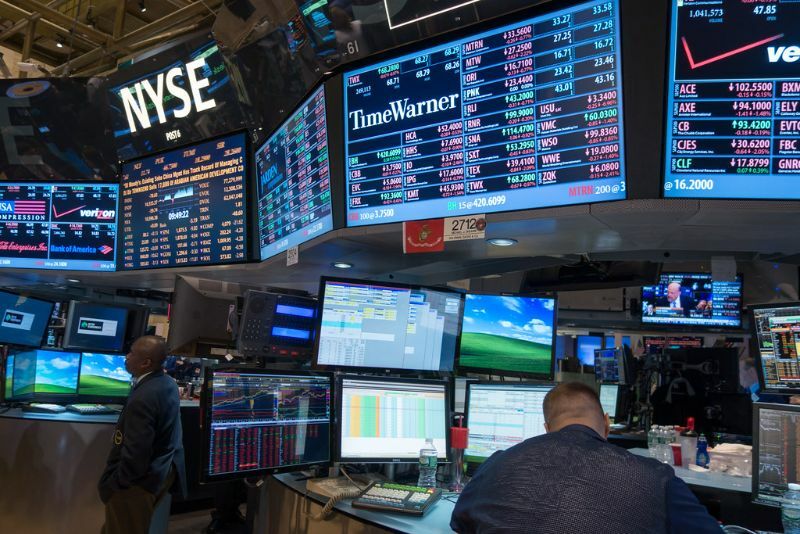The disadvantage of this strategy is that, due to the lack of a dividend, income investors may miss out on companies with extremely high growth rates.
Adobe Inc. is a company that doesn’t pay a dividend but has seen its business and stock price expand at an incredible rate (ADBE). Over the last decade, the company’s stock has returned 32 percent on an annualized basis. In 2010, a $10,000 investment in Adobe would be worth over $168,000 now.
While Adobe’s success over the previous decade has been undeniable, income investors interested in the company are likely to wonder if it will ever pay a dividend. This essay will examine Adobe’s business model, growth prospects, and competitive advantages in order to assess whether or not shareholders can expect a dividend in the near future.
Business Overview
Adobe creates, transfers, and prints electronic documents through a number of computer software tools. There are three business segments that make up the corporation. Users can develop, publish, promote, and monetize digital content with the help of the Digital Media segment’s tools and solutions.
In a range of domains, the Digital Experience segment offers products and solutions for the design, management, measurement, and optimization of customer experiences. Technical document publication, online application development, and high-end printing are among the products and services offered by the Publishing section.
In 2018, the firm changed its name from Adobe Systems Incorporated, which it had been since 1982. Adobe has a market valuation of more than $225 billion and produced revenue of more than $11.2 billion last year.
Photoshop, Illustrator, Acrobat, and InDesign are some of the company’s most popular software programs. Adobe also offers a Creative Cloud membership service that gives users access to the most recent versions of all of its creative products.
Growth Prospects
Customers now have a one-stop shop thanks to Adobe’s integration of its content creation products into the Creative Cloud.
Customers like the idea of being able to subscribe to these things. Customers can access and use Adobe’s products for as little as $10 per month. Because clients pay monthly rather than a one-time price, the subscription model helps to level out income outcomes.
Customers in many various fields, such as publishing, animation, and photography, use the Creative Cloud, which is popular among both professionals and amateurs. Cross-selling is also a breeze with the Creative Cloud because clients can pick and choose whatever goods they want to pay for.
Furthermore, even for its older products, Adobe continues to generate high sales. Acrobat and its PDF file format, for example, now generate $1 billion in yearly sales. Despite the fact that there are other PDF editors on the market, Adobe’s Acrobat Pro DC is the best.
The requirement for documents to be readable on any device a customer may have, such as a laptop, smartphone, or tablet, is also fuelling growth in this field. The coronavirus epidemic has only accelerated this tendency, as businesses and employees were forced to switch to a stay-at-home workforce in a very short period of time for substantial sectors of the economy.
Adobe’s main business is supplemented with add-ons, particularly in the area of digital experience. For example, in 2018, the corporation paid $4.8 billion for Marketo, a pioneer in business-to-business marketing interaction. The Marketo Engagement Platform provides advanced analytics to handle vast amounts of data and more complex marketing activities.
Adobe has a number of growth levers at its disposal, making it probable that the business will remain a dominant player in its market.
Competitive Advantages
According to Adobe, the total addressable market for application software is almost $128 billion. The company presently controls just under 10% of the market, indicating that there is still plenty of possibility for growth. The company is poised for future growth, as it holds a leadership position in its industry as a result of both organic and acquisition growth.
The high expenses of switching from the Creative Cloud are a crucial competitive advantage for the organization. With all of the capabilities that a customer need, regular application updates, and general acceptance of the goods, the chances of customers switching to a rival platform are slim. Adobe has a large customer base since its products are used by so many different disciplines.
This should help Adobe to keep growing at a rapid pace, especially given the company’s explosive growth over the last decade.
On September 15th, 2020, Adobe released their third-quarter earnings reports. Earnings-per-share (EPS) climbed by more than 25% to $2.57. Revenue increased by about 14% to $3.2 billion, a new high. Digital Media, Adobe’s largest division, increased by 19 percent, with subscription income increasing by a high single-digit percentage.
Adobe has a long history of high growth rates, which appears to be continuing this year. Analysts anticipate a 30 percent increase in adjusted earnings-per-share from 2019, with revenue expected to rise 15% to $12.8 billion.
Will Adobe Ever Pay A Dividend?
Profitability and free cash flow growth are two of the most critical factors for dividend increase at Adobe. Over the previous decade, the company has enjoyed strong earnings growth, with adjusted earnings-per-share increasing at a compound annual growth rate of over 14% from 2010 to 2019. As previously stated, adjusted earnings-per-share is likely to double its CAGR in 2020.
Analysts predict that adjusted earnings-per-share growth in 2021 will be 12%, which is in line with the company’s long-term average. Even yet, given what analysts expect the company to generate, double-digit increase compared to this year would be a great performance.
Adobe’s free cash flow has also increased dramatically in the last several years. In 2019, the company generated free cash flow of little over $4 billion, more than double its 2016 figure. Free cash flow is expected to reach $4.8 billion in 2020 if Adobe’s performance in the first nine months of the year is extrapolated to the rest of the year. This is a 20% increase over last year’s total.
Let’s pretend Adobe decided to set aside one-third of its annual cash flow to pay out dividends to shareholders. The yearly dividend would be $3.30 based on predictions for 2020 and the most recent share count of 485 million shares. Adobe stock currently has a dividend yield of 0.7 percent based on its closing price of $470 on Wednesday, November 25th.
The yield, albeit low, is exactly the same as Apple’s (AAPL) and isn’t too far off Microsoft’s (MSFT) 1% yield. Adobe’s yield isn’t particularly appealing to high-yield investors, but given the company’s potential to produce free cash flow, the dividend growth rate might be rather high.
The best thing is that this anticipated yield is based on paying the dividend with only one-third of free cash flow. The yield would be slightly greater if the company focused on a bigger percentage of free cash flow. In fact, if half of free cash flow was used, the stock would yield exactly the same as Microsoft.
Despite more than a decade of excellent profits, Adobe is still in the early stages of its corporate existence. Adobe is continuing to acquire acquisitions in order to sustain its core businesses, which necessitates the deployment of capital.
As a result, we don’t expect Adobe to pay a dividend in the near future, but if free cash flow growth continues to be strong, a payout could be forthcoming in the future. Adobe would most likely be able to grow its business while simultaneously paying a dividend if this happened.
This would give income investors the “best of all worlds” position, as Adobe would continue to expand while still generating income. Adobe is unlikely to start paying out a dividend for several years, according to our estimates.
Final Thoughts
Over the previous decade, Adobe has been one of the best-performing stocks. Even better, the company appears to be on track for continued expansion, thanks to strong demand for its products and acquisitions that expand Adobe’s product portfolio.
Adobe is also a very profitable corporation with a strong free cash flow growth track record. While Adobe does not currently pay a dividend, if free cash flow continues to rise at a rapid pace, shareholders may see one in the future. Even if there is no promise of a dividend, income investors with a longer time horizon might find Adobe attractive enough right now to buy even if there is no assurance of a payout.
See the following articles for analysis on whether other stocks that do not currently pay dividends will do so in the future:
How many shares of Adobe stock are outstanding?
For a current count of Adobe’s outstanding shares, consult the most recent form 10-Q or form 10-K in the financial records repository.
Will there be a stock split?
The Board of Directors of Adobe decides whether or not to split the company’s stock. On March 17, 2005, the most recent stock split was announced. For further information, see the 2:1 stock split FAQ.
What year was Adobe incorporated?
On October 26, 1983, Adobe was incorporated in California. Adobe reincorporated in Delaware on May 30, 1997, by merging with and forming Adobe Systems (Delaware), which was founded on May 9, 1997. The surviving corporation, Adobe Systems Incorporated (Delaware), changed its name to Adobe Systems Incorporated at the same time as the merger.
Can I have access to the quarterly financial analyst conference calls?
Webcasts of Adobe’s quarterly earnings calls and investor presentations are accessible on the company’s Investor Relations website. For information on current and impending events, consult the financial calendar.
When is the annual stockholder meeting held?
The Board of Directors decides on the date of the stockholder meeting, which is usually in April. About a month before the meeting, proxy packets and annual reports are mailed. A timetable of crucial upcoming dates can be found on the financial calendar.
Why buy stocks that don’t pay dividends?
The ex-dividend date is crucial for investors because it establishes when a shareholder must own a stock to receive a dividend payment. If an investor does not buy stock before the ex-dividend date, he will miss out on the dividend payment. If, on the other hand, an investor sells the stock after the ex-dividend date but before the dividend is paid, they are still entitled to the payout because they owned the stock prior to and on the ex-dividend date.
Investing in Stocks that Offer Dividends
Investing in dividend-paying stocks is clearly beneficial to owners. This is due to the fact that investors can get a regular income from their equity investment while continuing to retain the shares in order to profit from additional share price appreciation. Dividends are money in your pocket as the stock market rises and falls.
Companies that have a track record of paying regular dividends year after year tend to be better managed because they are conscious that they must provide cash to their shareholders four times a year. Companies with a lengthy history of paying dividends are often large-cap, well-established companies (e.g., General Electric). Their stock prices may not give the same large percentage gains as those of younger firms, but they are more stable and generate consistent returns on investment over time.
Investing in Stocks without Dividends
Why would anyone want to put their money into a firm that doesn’t provide dividends? In reality, there are a number of advantages to investing in equities that do not pay dividends. Companies that do not pay dividends on their stock often reinvest the money that would have gone to dividend payments towards the company’s expansion and overall growth. This suggests that their stock prices are likely to rise in value over time. When it comes time to sell the shares, the investor may well see a larger rate of return than he would have gotten if he had invested in a dividend-paying stock.
Companies that don’t pay dividends may use the money from future dividend payments to buy back stock on the open market, which is known as a “share buyback.” When there are fewer shares available on the open market, the company’s stock price rises.
Is it bad if a company does not pay dividends?
The board of directors of a corporation is in charge of determining whether or not to pay a dividend, the amount of any dividend paid, and when to discontinue paying a dividend. The board also takes choices on how the company’s money is allocated. When a firm chooses not to pay a dividend, it retains more cash for its own operations. Rather than paying investors, it might invest in its operations or fund expansion in the aim of rewarding them with more valuable shares of a stronger firm.
Is Adobe a good stock to buy?
At first glance, the stock appears to be overvalued, with a price-to-earnings ratio of around 49, yet Adobe has maintained a high valuation for several years. The fundamental reason for this is that Adobe has a long growth runway, with a long-term addressable market of $147 billion.
Furthermore, subscriptions account for roughly 97 percent of its creative software income, which keeps the top line pretty constant and makes estimating future earnings growth a little easier. Analysts currently predict Adobe will grow earnings per share at a pace of 17.8% each year on an annualized basis.
It’s not too late to make an Adobe investment. Mobile device advancements should continue to drive demand for Adobe’s creative cloud software, which can be accessed from a variety of platforms. While Adobe’s high valuation may limit gains in the short term, the digital content creation explosion could take several years to fully unfold. Adobe is the industry leader in this field, thus I expect the company to grow into its value and outperform the market in the long run.
Do Tesla pay dividends?
Tesla’s common stock has never paid a dividend. We want to keep all future earnings to fund future expansion, so no cash dividends are expected in the near future.
Why do companies give out dividends?
Dividend proponents argue that a high dividend distribution is beneficial for investors because it provides clarity regarding the company’s financial health. Companies that have continuously paid dividends have typically been among the most stable throughout the last many decades. As a result, a company that pays a dividend draws investors and increases stock demand.
Dividends are also appealing to investors seeking for a way to make money. A decrease or increase in dividend distributions, on the other hand, might alter a security’s price. If corporations with a lengthy history of dividend payouts lower their dividend distributions, their stock prices will suffer. Companies that boosted their dividend payouts or implemented a new dividend policy, on the other hand, would certainly see their stock prices rise. A dividend payment is also seen by investors as an indication of a company’s success and a sign that management has high hopes for future earnings, making the stock more appealing. The price of a company’s stock will rise if there is more demand for it. Dividends communicate a clear, powerful statement about a company’s future prospects and performance, and a company’s willingness and ability to pay consistent dividends over time demonstrates financial health.
Is Adobe a good stock to buy 2021?
Adobe’s long-term development story is unquestionably remarkable — and possibly underappreciated. For years, it has been expanding revenue at a double-digit percentage rate, and the company believes that trend will continue. Sales are expected to climb 19 percent year over year to $4.07 billion in the fourth quarter of fiscal 2021, according to management.
This stock, though, isn’t just for growth investors. Adobe is also extremely profitable. Over the last decade, it has consistently generated operating profit margins of well over 20%, with the most recent 12-month period seeing an operating margin of 36%. Those juicy profit margins aren’t going away anytime soon, with its sticky suite of subscription-based creativity and data management tools primed to continue growing.
When those stable profits are combined with double-digit sales growth and a present price of 48 times trailing-12-month earnings, it’s possible to argue that Adobe is a value stock disguised as a growth stock.






